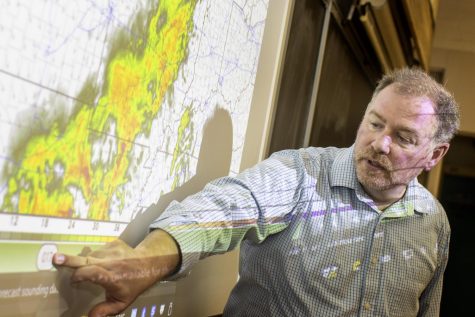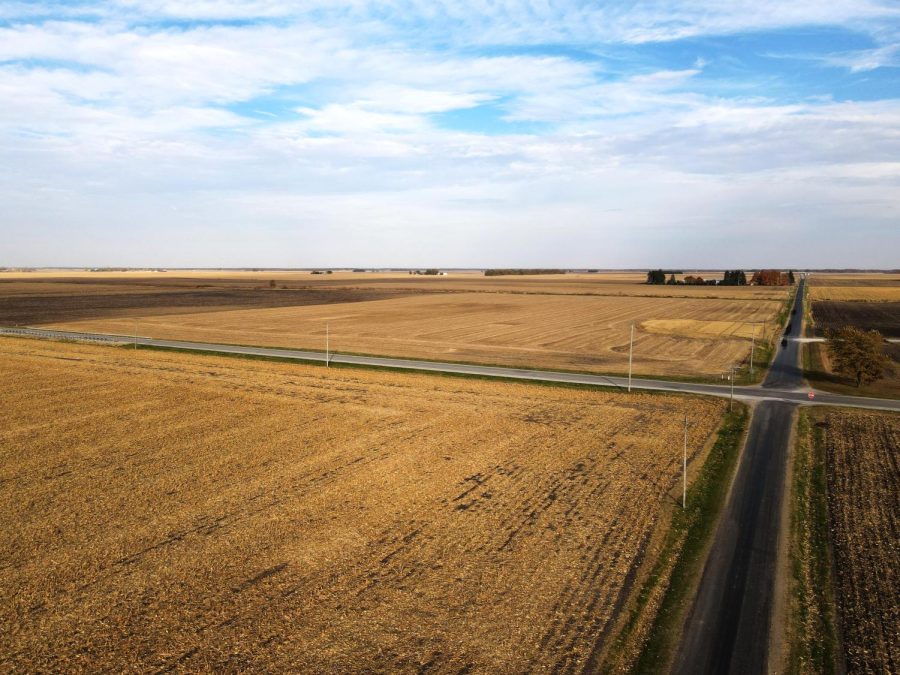Coles County burn ban to be lifted Wednesday
Cornfields and dry plants are at high risk of burning after a burn ban was placed in Coles County due to abnormally dry weather conditions. The ban will last from Saturday to Wednesday.
October 25, 2022
The Coles County burn ban is to be considered lifted after midnight tonight after an announcement was made by the Coles County Emergency Management Agency this afternoon.
Climatologist Cameron Craig, who has several advanced degrees in geography and geology, said although East Central Illinois received rain last night and today, it won’t be enough to reverse the abnormally dry climate.
Around 75 percent of the state is classified as abnormally dry, and just shy of 65 percent of Coles County is also listed as abnormally dry according to the U.S. Drought Monitor.
Instead of the ideal slow rain, over a period of time, around an inch of fast and heavy rain happened today and last night.
“The problem with… heavy rain is the dryness of the soil is not getting any better,” Craig said. “The heavy rain doesn’t allow for that soil to absorb any of that moisture, it actually just runs off, which is worse.”

Coles County has an average precipitation rate of 4.7 inches in the month of October, but this October has only had a projected one to one and one-fourth inch of rain.
People are encouraged not to burn anything, even in controlled environments with the risk of potential accidents.
Several fires happened over the weekend. Saturday afternoon, Coles County Emergency Management Agency instituted the burn ban across the country in an announcement after several fires were reported in neighboring counties.
In Martinsville, Ill., the fire protection districts responded to three fires Saturday starting with a field fire around 4:30 p.m. along 1400 Rd.
The fast winds had pushed the flames across a harvested cornfield and then into an uncut one.
After finishing with that fire, the crew received another call around 5:45 p.m. to an uncontrolled brush and property fire. The crew quickly put the fire out, and the property retained minimal damage.
Now, several days after the incidents, the burn ban is still in effect even after receiving rainfall.
Craig gave a similar example to what happened in the field fire in Martinsville, to show how dangerous this can be.
He said if someone were driving down a country road smoking a cigarette and once done, flicked it out the window while smoldering, the potential of it blowing into a field and possibly into residential areas, is extremely high.
He said if there is the absence of precipitation the atmosphere will become dry, and the surface temperature will rise.
Even if it does rain, the chance of it evaporating through the dry atmosphere is high. The solution is slow-paced rain over time to lower the surface temperature.
He added plants from fields don’t just fuel fire, but rather things people see and experience every day.
“It’s dry grass and piles of leaves,” Craig said. “That’s the fuel, especially without rain. You can just see it on your vehicle; see how dusty your vehicle is. Or if you suffer from allergies and you’re coughing and sniffling, all of that dust is because it has been dry.”
Craig said people need to be conscious of their decisions, especially during a time of extreme dryness.
“It’s a trickle-down effect, so it’s not just that we’re in a fire ban,” Craig said. “We’re also protecting other aspects of society.”
Rob Le Cates can be reached at 581-2812 or at [email protected].




















































